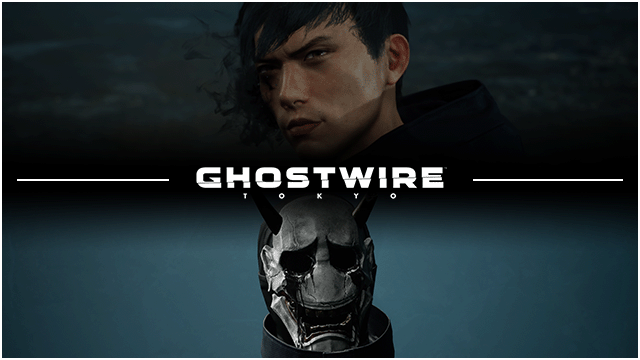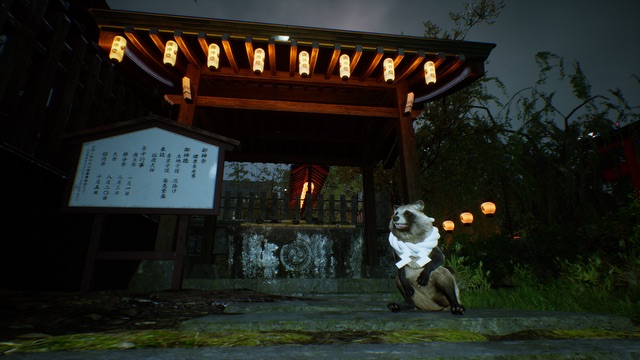Ikumi Nakamura announced Ghostwire: Tokyo at E3 2019 in a showcase that would launch her to internet fame. Her enthusiasm alone made this a game to watch for many. Two years later, the end result is a game that mixes eastern storytelling with western game design in a combination that leaves a strange taste on the palate. I love the setting, characters, and story so far, but it feels like it plays it too safe in some regards.
KK Slider
Ghostwire’s story kicks off when the protagonist, Akito, is badly injured in a traffic accident. While he’s lying on the pavement, a wondering spirit spots his body and, thinking he’s dead, possesses it. As Akito tries to assess his situation, people start vanishing into thin air around him, and hostile spirits called Visitors appear. As these ghouls invade Shibuya, the spirit cohabitating Akito’s body introduces itself as “KK” and shows him the ropes of supernatural combat.
While Ghostwire is ostensibly a first-person shooter, players won’t find any guns here (but there is a bow). Instead, Akito utilizes a form of spirit Jutsu to fire elemental blasts of energy at foes. If he hits a Visitor with enough damage, he can lasso their core with ghost wire and destroy it to vanquish his enemy.
These malevolent spirits are intimidating, but Akito soon finds out there’s a much more powerful force behind what’s happening in Tokyo. He rushes to a nearby hospital where his sister is a patient to see if she’s okay. Unfortunately, he finds a group of individuals wearing Hannya masks kidnapping her. Akito tries to fight them, but their leader punches clean through him, and he’s once again left near death. However, KK is able to save him, and they form a pact to take down the mask wearers.
Building interest in Ghostwire: Tokyo
Ghostwire is at its best when players are exploring setpieces. The journey through the hospital to find Akito’s sister was tense and served as a great introduction to the game. To begin with, hospitals aren’t pleasant, and the game plays on that natural aversion to that environment. Just the right amount of spooky audio effects and sporadical enemy placement paired with excellent lighting had me on pins and needles, wondering what was around the next corner.
Some sections are reminiscent of Control. Early on, you visit an apartment, and as you’re about to leave, KK signals that Visitors have surrounded the building with a barrier that threatens to crush them. The building is encased in a spiritual barrier that effectively changes the local laws of physics and suddenly up is down, down is left. You have to fight the environment to find and destroy the cores powering the barrier before it kills you.
I’m looking forward to seeing more locations as the game continues. But unfortunately, the world connecting these intriguing areas feels more typical.
Too open world
I loved the care put into Ghostwire’s Tokyo, but it suffers from some of the same sins we’ve seen in a multitude of open world games. Despite the shining environmental design, the game quickly slips players into an all too familiar routine.
Tokyo is covered in a gray mist that will quickly kill Akito if he strays into it. Sections of the map are unlocked by visiting Shinto shrines. These are functionally the same Ubisoft tower formula we’ve been following for the last two decades. As the fog is cleared, the map fills icons showing us where each side quest and other points of interest can be found. At least it makes sense in this instance since the protagonist lives in Tokyo and would know the city’s layout, but that doesn’t change the fact that I’m doing the same thing I’ve done hundreds of times before across every setting imaginable. We also have the same sensor pulse with Spirit Vision, so we can send out sensor scans to search out hundreds of collectibles. It’s all Shinto and Japanese folklore-themed, but the open world gameplay echoes 90% of the other entries in the genre.
There’s no way Tango Gameworks could know that they’d be releasing Ghostwire: Tokyo in a post-Elden Ring world. But after 100+ hours with that game, it’s hard to go back to being led around by the nose. The strange fate of Tokyo is supposed to be mysterious and spooky (even though it’s not branded as a horror game), but KK is constantly giving Akito pointers and spelling out what you need to do. I wanted exploration and tension, something akin to Tango’s previous game, The Evil Within 2. However, somewhere along the way, the developers decided to use the same old tools for the open world.
Technicalities
At first glance, the gap between the PS4 and PS5 isn’t the giant leap we’ve seen in past console generations So, it’s great to see a title that really takes advantage of the PS5’s power to provide an experience that wouldn’t be possible on Sony’s previous console. The DualSense is used to full effect here, and the SSD keeps loading times predictably low.
However, there is one thing that was a bit jarring to see. When opening certain doors (usually ones leading from an exterior to an interior), the screen fades to black before loading the next area. It’s not a huge deal since the PS5 loads quickly, but it seems decidedly last-gen. One of the big promises of moving to an SSD was keeping loading screens to a minimum. So, it’s strange that the devs didn’t pre-load interiors and make the transition from outside to inside more natural.
I also found the low framerate in Quality mode to detract from the experience. The game looks beautiful with raytracing and 4K, but the frame pacing felt weird to the point where it seemed like there was input delay. This was especially apparent during the fighting. Combat in Ghostwire: Tokyo is pretty fast-paced, especially when you’re facing multiple assailants. Playing in Quality mode made Akito feel like he was trying to walk in loosely-packed sand, so I quickly changed to Performance mode. The visuals take a bit of a hit when you set the game to prefer performance over quality, but getting double the framerate makes the tradeoff worth it.
What we think of Ghostwire: Tokyo so far
Ghostwire: Tokyo is a game with a contradiction at the heart of its design. It has high production value and a lot of obvious care put into crafting unique locations and scenarios for players to enjoy. However, despite the unique spin on Tokyo, the mechanics behind the open world are the same we’ve seen time and time again. Not every game needs a ton of collectibles and needless exploration, and based on the time I’ve spent with it so far, Ghostwire would have been better served as a more linear experience. Unfortunately, I was only allowed to examine the first two chapters of the game for preview, so my judgment is reserved for the full review.











